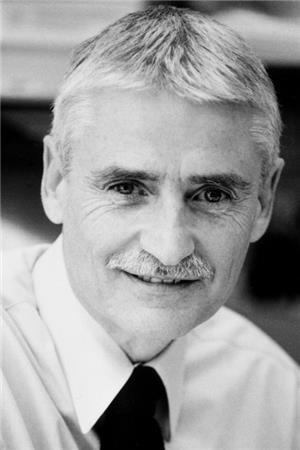On October 8, 2001, Dr. Leland H. Hartwell (b. 1939), president and director of Seattle's Fred Hutchinson Cancer Research Center, is named as a recipient of the Nobel Prize for "Physiology or Medicine." He shares the award with Tim Hunt (b. 1943) and Sir Paul Nurse (b. 1949), both of Great Britain. The prize is awarded for discoveries related to the "cell-cycle," the process by which a cell grows and eventually divides to form two new cells. Hartwell conducted his award-winning research in 1971 while teaching genetics at the University of Washington. The prize will be awarded at a ceremony in Stockholm, Sweden, on December 10, 2001.
Early Life and Education
Leland Hartwell was born on October 30, 1939, in Los Angeles, California, son of Ernest Hartwell, a sign maker, and Marjorie Taylor Hartwell (later Nichols). He showed an early interest in collecting bugs, spiders, snakes, and other small life forms, but between the age of 13 and 17 was "preoccupied with sports, girls and cars" ("Autobiography"). After transferring to a new high school, he was fortunate enough to find teachers who recognized and nurtured his talent in science and mathematics.
No one in Hartwell's family had ever attended college, and he started out cautiously, taking courses in math, chemistry, and physics at Glendale Junior College, hoping to become an engineer. After just one year, encouraged by a supportive professor, he applied for and was admitted to the prestigious California Institute of Technology, starting as a sophomore there in 1958. He received his Bachelor of Science degree in 1961, then went on to earn a Ph.D. from the Massachusetts Institute of Technology in 1964, working under the mentorship of biologist Boris Magasanik (b. 1919).
After leaving MIT, Hartwell went to the Salk Institute for Biological Studies to do postdoctoral work in 1964 and 1965, working with a noted virologist and Nobel Laureate, Dr. Renato Dulbecco (1914-2012). He then moved to the University of Washington, where he became a teacher of genetics in 1968 and a professor in 1973. It was while he was at the university that he conducted the original research that led to the Nobel Prize, which was awarded at a ceremony in Stockholm, Sweden, on December 10, 2001.
The Lives of a Cell
The double-helix structure of DNA, which carries each organism's genetic code, was worked out in 1953 by Francis Crick (1916-2004) and James D. Watson (b. 1928), based on work by Rosalind Franklin (1920-1958) and Maurice Wilkens (1916-2004). This breakthrough would energize decades of genetic research, and Crick, Watson, and Wilkins were awarded the Nobel Prize in 1962.
Hartwell was just one of many scientists to build on the work on DNA, but he became one of the most successful. His basic interest was in how cells grow and divide, and he concentrated his research on working out the details of this process at the molecular level.
Hartwell determined that mammalian cells were not the best candidates for his studies, and he instead selected Saccharomyces cerevisiae, the yeast cell that is used both for making bread and brewing beer. In 1971, while teaching genetics and doing research at the University of Washington, he discovered what he called "cell-division-cycle" genes. His primary finding, and the one that earned the Nobel, was that the process of cell division includes pauses (called "checkpoints"). Special checkpoint genes use the pauses to determine whether a cell is dividing normally and, if not, attempt genetic repair, allowing normal cell division to be completed. Hartwell's research gave important insights into how cancer, which arises from abnormal, uncontrolled cell growth, develops and progresses.
In 1996 Hartwell joined Seattle's Fred Hutchinson Cancer Research Center and in 1997 became its president and director. In September, 2009, he announced that he was moving to Arizona State University's Global Institute of Sustainability. There he would take on multiple roles, including occupying the Virginia Piper Chair and serving as chief scientist of personalized medicine at the university's Center for Sustainable Health, Biodesign Institute.
In His Own Words
In the autobiographical note he prepared for the Nobel Institute, Hartwell reflected on his life in science:
"Looking back over my life, I feel in some sense destined because of my native interest in understanding things at a fundamental level. And I also feel extremely fortunate for a great number of people who intervened or mentored me on my path. I sought a rigorous approach to mysterious problems and found people at each step that pointed the way. I feel very fortunate to have become a biologist at a time when curiosity was paramount and to have been trained by people who had high standards" ("Autobiography").
Hartwell was inducted into the National Academy of Science in 1987. In addition to the Nobel Prize, he has been honored with the Alfred P. Sloan Award for cancer research (1991), the Gairdner Foundation International Award (1992), the Genetics Society of America Medal (1994), and the Albert Lasker Basic Medical Research Award (1998). He remains (2012) at Arizona State University, where he concentrates his research on developing methods for putting to practical use in medical treatment the genetic discoveries made by him and other scientists.

